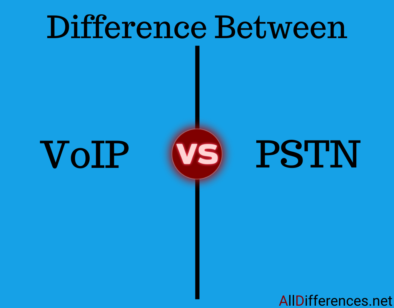Difference between VoIP and PSTN
Contents
Comparison between VoIP and PSTN
- VoIP (Voice over Internet Protocol) and PSTN (Public Switched Telephone Network) are two different technologies used for telecommunication.
- The key Difference between VoIP and PSTN is that VoIP uses the internet to make and receive calls whereas PSTN uses traditional telephone lines.
- VoIP offers more flexibility and cost-effectiveness compared to PSTN, as it allows users to make calls from anywhere with an internet connection. On the other hand, PSTN requires a physical connection to a telephone network.

| VoIP | PSTN |
|---|---|
| VoIP uses packet switching. | PSTN uses circuit switching. |
| VoIP channels carried over one Internet connection. | PSTN uses Dedicated Lines |
| VoIP lines require 100 kbps. (in each direction) | PSTN supports 64 kbps.(in each direction) |
| In VoIP, Features such as call waiting, Caller ID, and so on are usually included free with service | In PSTN, Features such as call waiting, Caller ID, and so on are usually available at an extra cost |
| VoIP, Upgrades usually require only bandwidth and software upgrades. | PSTN Can be upgraded or expanded with new equipment and line provisioning. |
| Long distance is often included in the regular monthly price | Long distance is usually per minute or bundled minute subscription |
| VoIP provides consistent voice quality but depends on bandwidth. | PSTN provides consistent voice quality. |
PSTN Working
- PSTN uses circuit switching to allow users to make landline telephone calls to one another.

VOIP Working
- Voice over Internet Protocol (VoIP) allows users to make calls over the internet to one another user.

In summary, VoIP uses the internet to transmit voice and multimedia content, while PSTN uses telephone lines. VoIP is more cost-effective, efficient, and flexible, and offers advanced features, while PSTN is more stable but limited in its capabilities.
